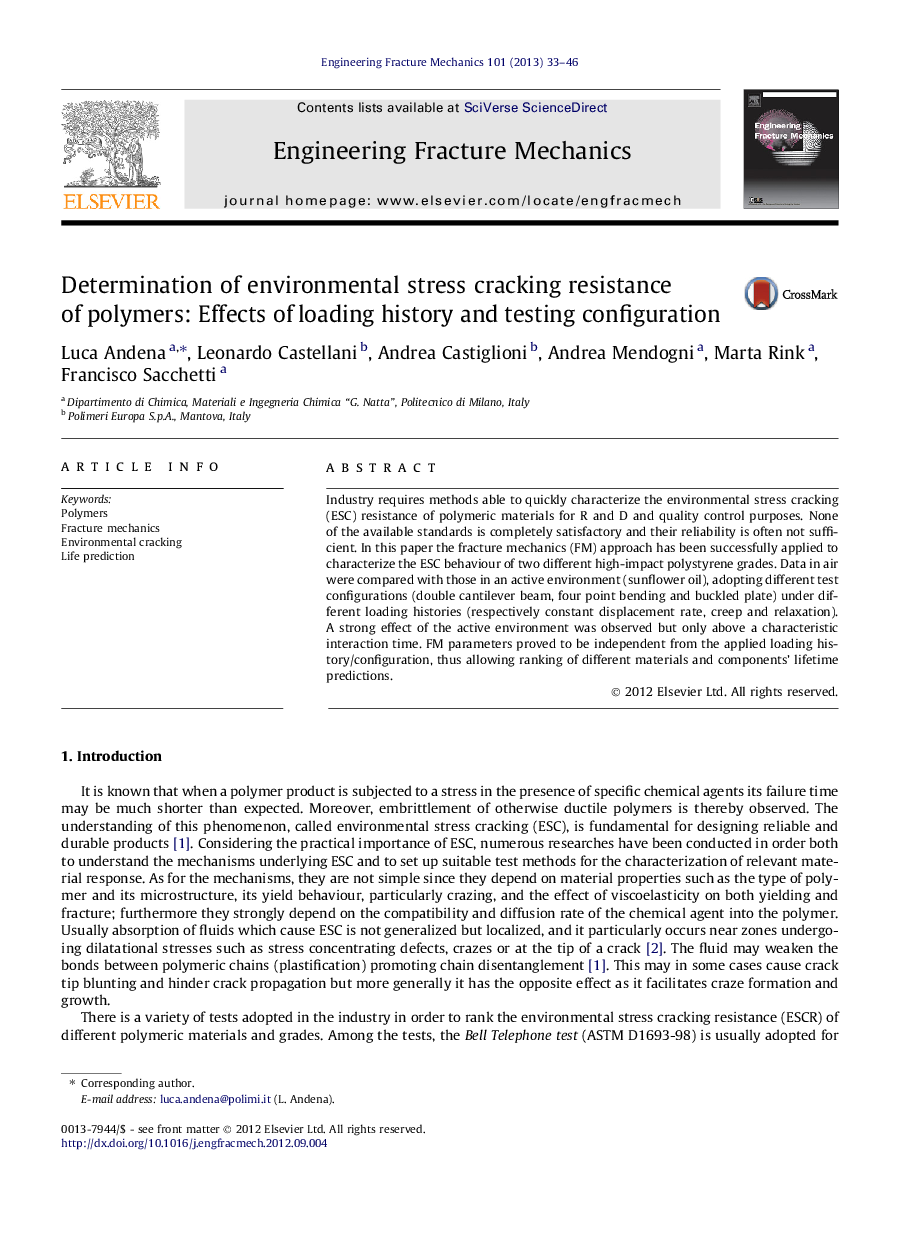| Article ID | Journal | Published Year | Pages | File Type |
|---|---|---|---|---|
| 775000 | Engineering Fracture Mechanics | 2013 | 14 Pages |
Industry requires methods able to quickly characterize the environmental stress cracking (ESC) resistance of polymeric materials for R and D and quality control purposes. None of the available standards is completely satisfactory and their reliability is often not sufficient. In this paper the fracture mechanics (FM) approach has been successfully applied to characterize the ESC behaviour of two different high-impact polystyrene grades. Data in air were compared with those in an active environment (sunflower oil), adopting different test configurations (double cantilever beam, four point bending and buckled plate) under different loading histories (respectively constant displacement rate, creep and relaxation). A strong effect of the active environment was observed but only above a characteristic interaction time. FM parameters proved to be independent from the applied loading history/configuration, thus allowing ranking of different materials and components’ lifetime predictions.
► The study is aimed at characterizing two HIPS grades with different ESC resistance. ► Different test configurations and loading histories, in air and oil, were adopted. ► A LEFM approach was used considering separately crack initiation and propagation. ► Oil lowers HIPS fracture toughness only above a characteristic interaction time. ► Fracture data is consistent with relative ESCR performance of the two HIPS grades.
